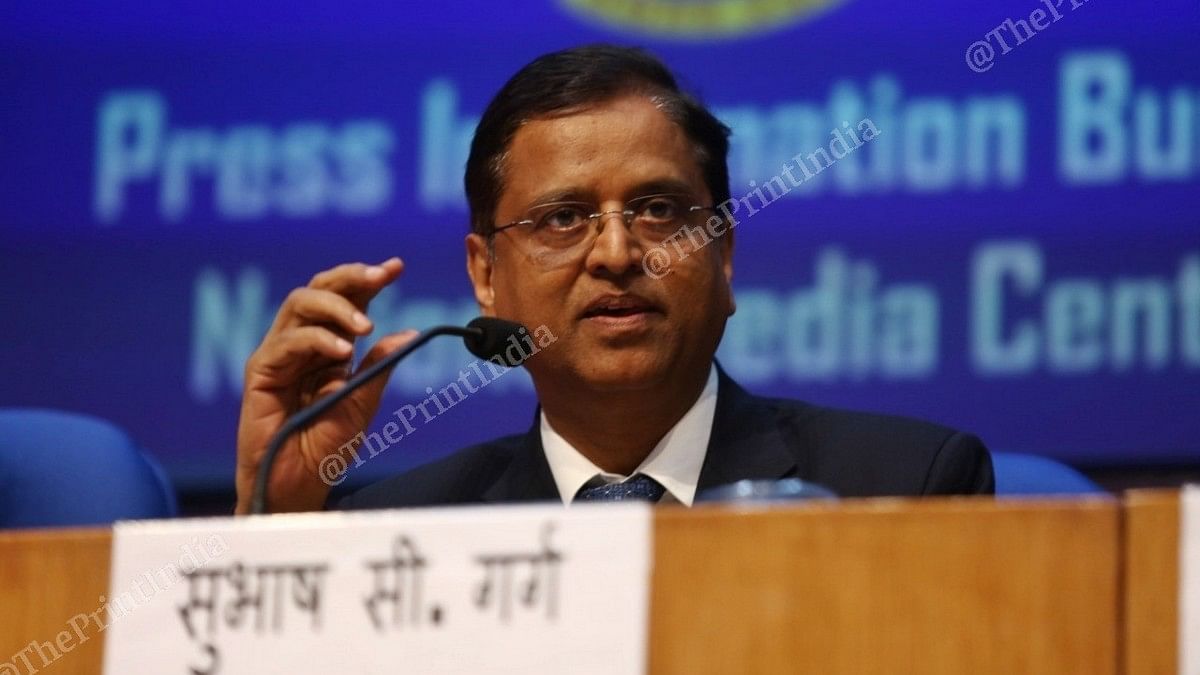New Delhi: The Narendra Modi government’s second term was among the lowest growth periods in more than three decades, former finance secretary Subhash Chandra Garg has said, adding the advance estimates for 2023-24 were likely to be revised downwards as they are “a bit optimistic”.
In an interview with ThePrint, Garg said data was now available for the full five-year period of the Modi government’s second term, running from financial year 2019-20 to 2023-24. He added that estimating the growth over the five-year period would require comparing the size of the economy in the last year of the second term (2023-24) with its size in the last year of the first term (2018-19).
Garg was a senior official in the Ministry of Finance during the Modi government’s first term, serving as economic affairs secretary from July 2017 to July 2019. During the last few months of the tenure, he also served as the finance secretary, an additional post held by the senior-most bureaucrat in the finance ministry.
“We have the advance estimates for 2023-24, which will be reduced by just a bit as these are a bit optimistic,” Garg said. “What is the five year growth for the Modi government’s second term? It’s about 4-4.1 percent, which is not something to write home about or crow about.”
“This would be one of the lowest growth periods in India’s history since the 1991 reforms,” he added.
The compounded annual growth rate of India’s GDP from 2018-19 to 2023-24 stood at 4.2 percent, according to ThePrint’s calculations based on data from the Ministry of Statistics and Programme Implementation.
Karnataka sees ‘drastic’ cut in tax share
Speaking about the ongoing tussle between the Centre and the southern states on the matter of tax devolution, Garg said the reason why Karnataka’s share in central taxes was cut by the Fifteenth Finance Commission needed greater scrutiny.
“With Karnataka, for some reason, the 15th Finance Commission reduced the state’s share in central taxes too drastically,” he said. “Other southern states that have also done well on industrialisation and population control have not seen a similar reduction in their shares.”
The Fifteenth Finance Commission (2020-26) cut Karnataka’s share in central taxes to 3.65 percent from the 4.71 percent prescribed in the Fourteenth Finance Commission (2015-20). In comparison, Tamil Nadu saw its share increase marginally to 4.08 percent from 4.02 percent over the same period.
Kerala was another state that saw a big cut in its share — though not as big as Karnataka’s — to 1.92 percent from 2.5 percent. Andhra Pradesh saw its share fall to 4.05 percent from 4.3 percent, and Telangana to 2.1 percent from 2.4 percent.
“For this, you cannot blame the central government,” Garg said. “The government would not have nudged the Finance Commission to do some hanky panky to reduce Karnataka’s share. Obviously, the factors and data that went into the decision had some effect in making Karnataka’s share fall that much.”
“So, was it because of some error or was something not taken into account,” he asked. “Or had the state improved factors like poverty so brilliantly that even compared to the other southern states it suffered so much more? That needs to be looked into.”
(Edited by Tikli Basu)

